
| Самолеты (сортировка по:) | |||||
| Страна | Конструктор | Название | Год | Фото | Текст |
Halberstadt CL.IV

|
Страна: Германия Год: 1918
Light two-seat C type, ground attack and escort |
| Halberstadt - C.VII/C.VIII - 1918 - Германия | <– | –> | Halberstadt - CLS I - 1918 - Германия |
 |
J.Herris - Halberstadt Aircraft of WWI. Volume 2: CL.IV-CLS.I & Fighters /Centennial Perspective/ (45) |
| Halberstadt CL.IV(Rol) 9455/18, III Marine Brigade, tactical '2' |
 |
J.Herris - Halberstadt Aircraft of WWI. Volume 2: CL.IV-CLS.I & Fighters /Centennial Perspective/ (45) |
| Halberstadt CL.IV '5' of Schlasta 6 |
 |
J.Herris - Halberstadt Aircraft of WWI. Volume 2: CL.IV-CLS.I & Fighters /Centennial Perspective/ (45) |
| Halberstadt CL.IV '6' of Schlasta 6 |
 |
J.Herris - Development of German Warplanes in WWI /Centennial Perspective/ (1) |
| Halberstadt CL.IV tactical number '6' from Schlasta 6 flown by Lt. Gunther Ludeke and Uffz. Karl Steck, October 1918. Oblt. Jurgen Ludeke commanded Schlasta 6 and the death's head unit marking is derived from the Ludeke brothers' previous service with Braunschweigesches Husaren-Regiment Nr.17, Totenkopf (Death's Head). |
 |
J.Herris - Halberstadt Aircraft of WWI. Volume 2: CL.IV-CLS.I & Fighters /Centennial Perspective/ (45) |
| Halberstadt CL.IV, Schlasta 9, tactical '6' |
 |
J.Herris - Halberstadt Aircraft of WWI. Volume 2: CL.IV-CLS.I & Fighters /Centennial Perspective/ (45) |
| Halberstadt CL.IV flown by Lt. Ebel of Schlasta 21 |
 |
J.Herris - Halberstadt Aircraft of WWI. Volume 2: CL.IV-CLS.I & Fighters /Centennial Perspective/ (45) |
| Halberstadt CL.IV, Schlasta 26 tactical '6'. Note: Thin '6' shown; thick numerals also used. |
 |
J.Herris - Halberstadt Aircraft of WWI. Volume 2: CL.IV-CLS.I & Fighters /Centennial Perspective/ (45) |
| Halberstadt CL.IV '2' Brunhilde, Schlasta 27 |
 |
J.Herris - Halberstadt Aircraft of WWI. Volume 2: CL.IV-CLS.I & Fighters /Centennial Perspective/ (45) |
| Halberstadt CL.IV of Marine Brigade |
 |
J.Herris - Halberstadt Aircraft of WWI. Volume 2: CL.IV-CLS.I & Fighters /Centennial Perspective/ (45) |
| Halberstadt CL.IV '5' with axe marking |
 |
J.Herris - Halberstadt Aircraft of WWI. Volume 2: CL.IV-CLS.I & Fighters /Centennial Perspective/ (45) |
| Halberstadt CL.IV |
 |
Сайт - Pilots-and-planes /WWW/ |
| Halberstadt CL.IV |
 |
J.Herris - Halberstadt Aircraft of WWI. Volume 2: CL.IV-CLS.I & Fighters /Centennial Perspective/ (45) |
| Halberstadt CL.IV(Rol) 8078/18. Taken over after the war at Bickendorf airport (Butzweilerhof), this aircraft was repainted on the top and sides with PC 10. In the list of planes taken over by the RAF there is a plane with a similar number (8070/18). Everything indicates that the number of this aircraft was read and written incorrectly. The trail ends at the end of 1919. |
 |
J.Herris - Halberstadt Aircraft of WWI. Volume 2: CL.IV-CLS.I & Fighters /Centennial Perspective/ (45) |
| Halberstadt CL.IV 525/18 of the 14th Reconnaissance Sqdn., Polish Air Service. On 4 June, 1921 in this plane, Pilot Lt. Stefan Berezowski & Observer Lt. Mieczyslaw Danecki got lost during a storm and landed in German territory in Drezdenko near the Notec River. During the crash the observer was seriously injured and died in hospital two days later. The plane was scrapped. |
 |
J.Herris - Halberstadt Aircraft of WWI. Volume 2: CL.IV-CLS.I & Fighters /Centennial Perspective/ (45) |
| Halberstadt CL.IV No.1770 (ex 5893/18), Obojan (Обоянь) airport 1921. This plane belonged to the Polish 2nd Reconnaissance Squadron. On June 26, 1920, Sgt. Pilot Stefan Niewitecki and Lt. observer Jan Zardecki were shot down over enemy territory and taken prisoner (from which they escaped after a few weeks). The damaged airframe was captured by the Soviets and renovated. |
 |
J.Herris - Development of German Warplanes in WWI /Centennial Perspective/ (1) |
| "Хальберштадт" CL-IV, восстановленный до летного состояния (современный снимок) Restored Halberstadt CL.IV in the spectacular colors of the leader of Schlasta 21 on display at the USAF Museum. |
 |
J.Herris - Halberstadt Aircraft of WWI. Volume 2: CL.IV-CLS.I & Fighters /Centennial Perspective/ (45) |
| Restored Halberstadt CL.IV of the commanding officer of Schlachtstaffel 21. This aircraft is in the National Museum of the USAF. The compact design of the Halberstadt CL.IV is evident. |
 |
J.Herris - Halberstadt Aircraft of WWI. Volume 1: A-types to C.III /Centennial Perspective/ (44) |
| Restored Halberstadt CL.IV in the colors of the commanding officer of Schlactstaffel 21 on display at the National Museum of the USAF at Wright-Patterson AFB, Dayton, Ohio. |
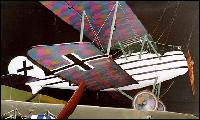 |
Сайт - Pilots-and-planes /WWW/ |
 |
J.Herris - Halberstadt Aircraft of WWI. Volume 2: CL.IV-CLS.I & Fighters /Centennial Perspective/ (45) |
| Halberstadt CL.IV restored in the colors of Lt. Ebele, commander of Schlachstaffel 21, on display at the National Museum of the USAF at Wright-Patterson AFB. |
 |
J.Herris - Development of German Warplanes in WWI /Centennial Perspective/ (1) |
| Cockpit of the restored Halberstadt CL.IV of the USAF Museum shows the proximity of the pilot and gunner for close cooperation during combat. The gunner had an exceptional field of fire. |
 |
J.Herris - Halberstadt Aircraft of WWI. Volume 2: CL.IV-CLS.I & Fighters /Centennial Perspective/ (45) |
| Halberstadt CL.IV restored in the colors of Lt. Ebele, commander of Schlachstaffel 21, on display at the National Museum of the USAF at Wright-Patterson AFB. |
 |
J.Herris - Halberstadt Aircraft of WWI. Volume 2: CL.IV-CLS.I & Fighters /Centennial Perspective/ (45) |
| Halberstadt CL.IV restored in the colors of Lt. Ebele, commander of Schlachstaffel 21, on display at the National Museum of the USAF at Wright-Patterson AFB. |
 |
J.Herris - Halberstadt Aircraft of WWI. Volume 2: CL.IV-CLS.I & Fighters /Centennial Perspective/ (45) |
| Halberstadt CL.IV restored in the colors of Lt. Ebele, commander of Schlachstaffel 21, on display at the National Museum of the USAF at Wright-Patterson AFB. |
 |
J.Herris - Halberstadt Aircraft of WWI. Volume 2: CL.IV-CLS.I & Fighters /Centennial Perspective/ (45) |
| Halberstadt CL.IV restored in the colors of Lt. Ebele, commander of Schlachstaffel 21, on display at the National Museum of the USAF at Wright-Patterson AFB. |
 |
J.Herris - Halberstadt Aircraft of WWI. Volume 2: CL.IV-CLS.I & Fighters /Centennial Perspective/ (45) |
| Halberstadt CL.IV restored in the colors of Lt. Ebele, commander of Schlachstaffel 21, on display at the National Museum of the USAF at Wright-Patterson AFB. |
 |
J.Herris - Halberstadt Aircraft of WWI. Volume 2: CL.IV-CLS.I & Fighters /Centennial Perspective/ (45) |
| Halberstadt CL.IV restored in the colors of Lt. Ebele, commander of Schlachstaffel 21, on display at the National Museum of the USAF at Wright-Patterson AFB. |
 |
J.Herris - Halberstadt Aircraft of WWI. Volume 2: CL.IV-CLS.I & Fighters /Centennial Perspective/ (45) |
| Halberstadt CL.IV restored in the colors of Lt. Ebele, commander of Schlachstaffel 21, on display at the National Museum of the USAF at Wright-Patterson AFB. The black and white stripes on the fuselage were the unit markings. |
 |
J.Herris - Halberstadt Aircraft of WWI. Volume 2: CL.IV-CLS.I & Fighters /Centennial Perspective/ (45) |
| Halberstadt CL.IV restored in the colors of Lt. Ebele, commander of Schlachstaffel 21, on display at the National Museum of the USAF at Wright-Patterson AFB. The black and white stripes on the fuselage were the unit markings. The white stripes on the tailplane were applied directly over the camouflage fabric; the dark stripes on the upper surface of the tailplane were not black. |
 |
J.Herris - Halberstadt Aircraft of WWI. Volume 2: CL.IV-CLS.I & Fighters /Centennial Perspective/ (45) |
| Halberstadt CL.IV restored in the colors of Lt. Ebele, commander of Schlachstaffel 21, on display at the National Museum of the USAF at Wright-Patterson AFB. |
 |
J.Herris - Halberstadt Aircraft of WWI. Volume 2: CL.IV-CLS.I & Fighters /Centennial Perspective/ (45) |
| Halberstadt CL.IV(Rol) 8103/18 in the National Air & Space Museum. This aircraft was finished according to Roland factory practice; the serial and data block were applied in bright blue paint. |
 |
J.Herris - Halberstadt Aircraft of WWI. Volume 2: CL.IV-CLS.I & Fighters /Centennial Perspective/ (45) |
| Restored Halberstadt CL.IV(Rol) at NASM's Udvar-Hazy facility. The factory finish of this Roland-built aircraft was well documented during its restoration. Roland finished late-production Roland D.VIb aircraft from the 6100-6149/18 and 7500-7549/18 production batches in the same colors. |
 |
J.Herris - Halberstadt Aircraft of WWI. Volume 2: CL.IV-CLS.I & Fighters /Centennial Perspective/ (45) |
| Halberstadt CL.IV(Rol) 8103/18 in the National Air & Space Museum. This aircraft was finished according to Roland factory practice; the serial and data block were applied in bright blue paint. |
 |
J.Herris - Halberstadt Aircraft of WWI. Volume 2: CL.IV-CLS.I & Fighters /Centennial Perspective/ (45) |
| Halberstadt CL.IV(Rol) 8103/18 in the National Air & Space Museum. This aircraft was finished according to Roland factory practice; the serial and data block were applied in bright blue paint. |
 |
J.Herris - Halberstadt Aircraft of WWI. Volume 2: CL.IV-CLS.I & Fighters /Centennial Perspective/ (45) |
 |
J.Herris - Halberstadt Aircraft of WWI. Volume 2: CL.IV-CLS.I & Fighters /Centennial Perspective/ (45) |
| Halberstadt CL.IV(Rol) 8103/18 in the National Air & Space Museum. This aircraft was finished according to Roland factory practice; the serial and data block were applied in light blue paint. Roland finished late-production Roland D.VI fighters in the same colors. |
 |
J.Herris - Halberstadt Aircraft of WWI. Volume 2: CL.IV-CLS.I & Fighters /Centennial Perspective/ (45) |
| Two views of Paul Strahle's civilianized D-IBAO on display. (Michael Schmeelke) |
 |
J.Herris - Halberstadt Aircraft of WWI. Volume 2: CL.IV-CLS.I & Fighters /Centennial Perspective/ (45) |
| Paul Strahle's restored Halberstadt CLIV(Rol) D-IBAO on display in the museum. The exhaust is nonstandard. (Michael Schmeelke) |
 |
J.Herris - Halberstadt Aircraft of WWI. Volume 2: CL.IV-CLS.I & Fighters /Centennial Perspective/ (45) |
| Halberstadt CL.IV prototype on the factory airfield in February 1918. Note the old-style national insignia. The wooden mockup of a Parabellum LMG 14 shows its wide arc of fire. (Peter M. Grosz collection/STDB) |
 |
J.Herris - Halberstadt Aircraft of WWI. Volume 2: CL.IV-CLS.I & Fighters /Centennial Perspective/ (45) |
| Halberstadt CL.IV type-test aircraft, probably photographed in March 1918. (Peter M. Grosz collection/STDB) |
 |
J.Herris - Halberstadt Aircraft of WWI. Volume 2: CL.IV-CLS.I & Fighters /Centennial Perspective/ (45) |
| Early production Halberstadt CL.IV on the factory airfield on May 1918. The lower wings of the CL.II and CL.IV were very similar but not interchangeable. (Peter M. Grosz collection/STDB) |
 |
J.Herris - Halberstadt Aircraft of WWI. Volume 2: CL.IV-CLS.I & Fighters /Centennial Perspective/ (45) |
| The CL IV derivative of the CL II offered greater manoeuvrability and better performance. Early production Halberstadt CL.IV on the factory airfield on May 1918. The lower wings of the CL.II and CL.IV were very similar but not interchangeable. (Peter M. Grosz collection/STDB) |
 |
J.Herris - Halberstadt Aircraft of WWI. Volume 2: CL.IV-CLS.I & Fighters /Centennial Perspective/ (45) |
| Halberstadt CL.IV 4636/18 Medi, Wnr 1433, with crew. An identification streamer is attached to the lower left wingtip. |
 |
J.Herris - Halberstadt Aircraft of WWI. Volume 2: CL.IV-CLS.I & Fighters /Centennial Perspective/ (45) |
| Halberstadt CL.IV(Rol) 8171/18 of the first production series from Roland. The camouflage of this aircraft was that normally applied by the Roland factory, not the same as the Halberstadt factory camouflage. The name and serial number were applied with light blue paint. Most parts were stencilled with the designation Halb CL.IV(Rol). (Peter M. Grosz collection/STDB) |
 |
J.Herris - Halberstadt Aircraft of WWI. Volume 2: CL.IV-CLS.I & Fighters /Centennial Perspective/ (45) |
| Halberstadt CL.IV(Rol) 8171/18 of the first production series from Roland. The camouflage of this aircraft was that normally applied by the Roland factory, not the same as the Halberstadt factory camouflage. The name and serial number were applied with light blue paint. Most parts were stencilled with the designation Halb CL.IV(Rol). (Peter M. Grosz collection/STDB) |
 |
J.Herris - Halberstadt Aircraft of WWI. Volume 2: CL.IV-CLS.I & Fighters /Centennial Perspective/ (45) |
| Halberstadt CL.IV(Rol) 8171/181 of the first production series from Roland. In this view the underside of the airfoil radiator can be seen. (Peter M. Grosz collection/STDB) |
 |
J.Herris - Halberstadt Aircraft of WWI. Volume 2: CL.IV-CLS.I & Fighters /Centennial Perspective/ (45) |
| Halberstadt CL.IV(Rol) 8176/18 with white nose of postwar Freikorps unit FA 426 at Radziwilliszki, Lithuania in September 1919. The white nose was the unit marking. The man in light colored jacket is Abteilungsfuhrer Oblt. Hellmuth Weinschenck. The remains of this aircraft were captured by Lithuanians on 21.11.1919. (Peter M. Grosz collection/STDB) |
 |
J.Herris - Halberstadt Aircraft of WWI. Volume 2: CL.IV-CLS.I & Fighters /Centennial Perspective/ (45) |
| Roland-built Halberstadt CL.IV(Rol) 8197/18 with members of the Polizei Fliegerstaffel Hamburg. (Peter M. Grosz collection/STDB) |
 |
J.Herris - Halberstadt Aircraft of WWI. Volume 2: CL.IV-CLS.I & Fighters /Centennial Perspective/ (45) |
| Crewman photographed with Halberstadt CL.IV(Rol) 9411/18. (Peter M. Grosz collection/STDB) |
 |
J.Herris - Halberstadt Aircraft of WWI. Volume 2: CL.IV-CLS.I & Fighters /Centennial Perspective/ (45) |
| Halberstadt CL.IV(Rol) 9440/18 from a manual photo showing how the seat pack version of the parachute was attached to the observer. It could also be worn as a back pack. The static line (Zugleine) was tied to the gun ring, (Peter M. Grosz collection/STDB) |
 |
J.Herris - Halberstadt Aircraft of WWI. Volume 2: CL.IV-CLS.I & Fighters /Centennial Perspective/ (45) |
| Halberstadt CL.IV 9455/18 of III Marine Brigade undergoing maintenance, in the field. (Peter M. Grosz collection/STDB) |
 |
J.Herris - Halberstadt Aircraft of WWI. Volume 2: CL.IV-CLS.I & Fighters /Centennial Perspective/ (45) |
| Halberstadt CL.IV(Rol) 9455/18 '2' of III Marine Brigade with its crew. The aircraft has sustained damage to the lower port wing that has been repaired. (Peter M. Grosz collection/STDB) |
 |
J.Herris - Halberstadt Aircraft of WWI. Volume 2: CL.IV-CLS.I & Fighters /Centennial Perspective/ (45) |
| Halberstadt CLIV(Rol) 9466/18 with unknown crewman. The Roland logo in metal is under the exhaust. |
 |
J.Herris - Halberstadt Aircraft of WWI. Volume 2: CL.IV-CLS.I & Fighters /Centennial Perspective/ (45) |
| Halberstadt CLIV(Rol) 9470/18 of the second Roland production batch carries the national insignia on the fuselage without the normal white outline. The Roland logo was a metal plate. (Peter M. Grosz collection/STDB) |
 |
J.Herris - Halberstadt Aircraft of WWI. Volume 2: CL.IV-CLS.I & Fighters /Centennial Perspective/ (45) |
| Halberstadt CL.IV probably of Schlachtstaffel 33 photographed on August 10, 1918 with Halberstadt chief engineer Karl Theis. The armament rack holds four Wurfgranaten 15 for ground-attack. (Peter M. Grosz collection/STDB) |
 |
J.Herris - Halberstadt Aircraft of WWI. Volume 2: CL.IV-CLS.I & Fighters /Centennial Perspective/ (45) |
| Unarmed Halberstadt CL.IV of the Polizeifliegerstaffel Hamburg in 1919-1920. The Hamburg coat of arms was painted on the fuselage side. (Peter M. Grosz collection/STDB) |
 |
J.Herris - Halberstadt Aircraft of WWI. Volume 2: CL.IV-CLS.I & Fighters /Centennial Perspective/ (45) |
| Halberstadt CL.IV at its Schlasta with two mechanics. The rear fuselage and tail are painted in black and white stripes, the Schlasta colors. |
 |
J.Herris - Halberstadt Aircraft of WWI. Volume 2: CL.IV-CLS.I & Fighters /Centennial Perspective/ (45) |
| Halberstadt CL.IV '2' of an unknown unit with hammer unit insignia. On the original photo the parachute installation is seen, two metal cables as static lines were used for the crew. (Peter M. Grosz collection/STDB) |
 |
J.Herris - Halberstadt Aircraft of WWI. Volume 2: CL.IV-CLS.I & Fighters /Centennial Perspective/ (45) |
| Halberstadt CLIV in French hands in 1919. |
 |
J.Herris - Halberstadt Aircraft of WWI. Volume 2: CL.IV-CLS.I & Fighters /Centennial Perspective/ (45) |
| Early Halberstadt CL.IV at Adlershof. (Peter M. Grosz collection/STDB) |
 |
J.Herris - Halberstadt Aircraft of WWI. Volume 2: CL.IV-CLS.I & Fighters /Centennial Perspective/ (45) |
| A Halberstadt CL.IV(Rol) provides the background for this photo of unknown unit personnel. Tenth from the left is pilot Johan Neumann, who from Spring 1919 was in Polish aviation. During the Polish-Russian war he was pilot in the 8th Eskadra Wywiadowcza. His Bristol-Fighter was shot down during strafing Russian cavalry and crashed in enemy territory. He escaped but the gunner was WIA and made PoW. |
 |
J.Herris - Halberstadt Aircraft of WWI. Volume 2: CL.IV-CLS.I & Fighters /Centennial Perspective/ (45) |
| Halberstadt CL.IV of the Fliegerabteilung of the III Marine Brigade (Lowenfeld) photographed at Dorsten. The written text on the lower photo refers to "Kapputsch"; no doubt this refers to the "Kapp-Putsch", which dates the photos to mid-March 1920. (Peter M. Grosz collection/STDB) |
 |
J.Herris - Halberstadt Aircraft of WWI. Volume 2: CL.IV-CLS.I & Fighters /Centennial Perspective/ (45) |
| Crew in their Halberstadt CL.IV with axe insignia. (Peter M. Grosz collection/STDB) |
 |
J.Herris - Halberstadt Aircraft of WWI. Volume 2: CL.IV-CLS.I & Fighters /Centennial Perspective/ (45) |
| Halberstadt CL.IV and crew of an unknown unit with hammer unit insignia. Note Heinecke parachute harness for crew with static lines going under the fuselage. (Peter M. Grosz collection/STDB) |
 |
J.Herris - Halberstadt Aircraft of WWI. Volume 2: CL.IV-CLS.I & Fighters /Centennial Perspective/ (45) |
| Halberstadt CL.IV '1' of an unknown unit. (Peter M. Grosz collection/STDB) |
 |
J.Herris - Halberstadt Aircraft of WWI. Volume 2: CL.IV-CLS.I & Fighters /Centennial Perspective/ (45) |
| Halberstadt CL.IV of an unknown unit with aircrew and ground crew. (Peter M. Grosz collection/STDB) |
 |
J.Herris - Halberstadt Aircraft of WWI. Volume 2: CL.IV-CLS.I & Fighters /Centennial Perspective/ (45) |
| This aircraft with axe insignia has a propeller-driven electrical generator. (Peter M. Grosz collection/STDB) |
 |
J.Herris - Halberstadt Aircraft of WWI. Volume 2: CL.IV-CLS.I & Fighters /Centennial Perspective/ (45) |
| Halberstadt CL.IV and crew of an unknown unit with axe unit insignia shows that the axe insignia was also applied to the underside of the lower wings. (Peter M. Grosz collection/STDB) |
 |
J.Herris - Halberstadt Aircraft of WWI. Volume 2: CL.IV-CLS.I & Fighters /Centennial Perspective/ (45) |
| Halb CL.IV(Rol) with light painted nose of an unknown unit and unknown personnel. A chevron marking is on the fuselage. |
 |
J.Herris - Halberstadt Aircraft of WWI. Volume 2: CL.IV-CLS.I & Fighters /Centennial Perspective/ (45) |
| Halb CL.IV(Rol) with light painted nose of an unknown unit and unknown personnel. A chevron marking is on the fuselage. |
 |
J.Herris - Halberstadt Aircraft of WWI. Volume 2: CL.IV-CLS.I & Fighters /Centennial Perspective/ (45) |
| Halberstadt CL.IV of the Fliegerabteilung of the III Marine Brigade (Lowenfeld) photographed at Dorsten. (Peter M. Grosz collection/STDB) |
 |
J.Herris - Halberstadt Aircraft of WWI. Volume 2: CL.IV-CLS.I & Fighters /Centennial Perspective/ (45) |
| Early Halberstadt CL.IV at Adlershof in mid-1918. (Peter M. Grosz collection/STDB) |
 |
J.Herris - Halberstadt Aircraft of WWI. Volume 2: CL.IV-CLS.I & Fighters /Centennial Perspective/ (45) |
| Early Halberstadt CL.IV at Adlershof. (Peter M. Grosz collection/STDB) |
 |
J.Herris - Halberstadt Aircraft of WWI. Volume 2: CL.IV-CLS.I & Fighters /Centennial Perspective/ (45) |
| Halberstadt CL.IV of an unknown unit with crew. The printed fabric on the lower wing is unusual. (Reinhard Zankl) |
 |
J.Herris - Halberstadt Aircraft of WWI. Volume 2: CL.IV-CLS.I & Fighters /Centennial Perspective/ (45) |
| Halb. CL.IV on display in Schlachstaffel 21 colors. (Michael Schmeelke) |
 |
J.Herris - Halberstadt Aircraft of WWI. Volume 2: CL.IV-CLS.I & Fighters /Centennial Perspective/ (45) |
| Uffz. August Beckerdorf (gunner, at left) and Vzfw. Binnewald (pilot) of Schlasta 10 at Eppes bei Laon in August 1918 with their Halberstadt CL.IV. |
 |
J.Herris - Halberstadt Aircraft of WWI. Volume 2: CL.IV-CLS.I & Fighters /Centennial Perspective/ (45) |
| Halberstadt CL.IV with crewmen of an unknown unit. (Peter M. Grosz collection/STDB) |
 |
J.Herris - Halberstadt Aircraft of WWI. Volume 2: CL.IV-CLS.I & Fighters /Centennial Perspective/ (45) |
| Halberstadt CL.IV of Schlasta 26b with painted girl's name Else and its crew. |
 |
J.Herris - Halberstadt Aircraft of WWI. Volume 2: CL.IV-CLS.I & Fighters /Centennial Perspective/ (45) |
| Halberstadt CL.IV of Schlasta 26b with its crew. The tactical number '3' is painted with a thick numeral as is '6' behind it. |
 |
J.Herris - Development of German Warplanes in WWI /Centennial Perspective/ (1) |
| Halberstadt lineup of Schlachtstaffel 21. The commanding officer's CL.IV is third from right and is the aircraft depicted in the colors of the restored CL.IV in the National Museum of the USAF. The other CL.II aircraft have their black and white colors reversed; their black stripes are wider than their white stripes. The distinctive markings of the leader's aircraft helped the others maintain formation on it during combat. |
 |
J.Herris - Halberstadt Aircraft of WWI. Volume 2: CL.IV-CLS.I & Fighters /Centennial Perspective/ (45) |
| Halberstadt CL.IV '3' and a Halberstadt CL.II of Schlasta 33 and Hannover CL.IIIa aircraft of Schlasta 20. (Peter M. Grosz collection/STDB) |
 |
J.Herris - Halberstadt Aircraft of WWI. Volume 2: CL.IV-CLS.I & Fighters /Centennial Perspective/ (45) |
| Halberstadt CL.IV second from left from Schlasta 33 and Hannovers in the background of (probably) Schlasta 20 on August 10,1918. Aircraft at left is a Halberstadt CL.II with another behind the CL.IV. (Peter M. Grosz collection/STDB) |
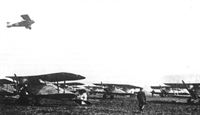 |
C.Owers, J.Herris - Hannover Aircraft of WWI /Centennial Perspective/ (46) |
| Hannover CL.II and Halberstadt aircraft of Schlachtstaffelgruppe D. Note the white tail of the machine in flight. |
 |
J.Herris - Halberstadt Aircraft of WWI. Volume 1: A-types to C.III /Centennial Perspective/ (44) |
| Two views of a Schlachtstaffel 24b lineup with Halberstadt CL.II aircraft in the foreground, a Halberstadt CLIV in the middle, with Hannover CL-types in the background. Documents say that Schlasta machine no. 5 is seen after plywood replacement in the Germania works. Each Halberstadt's early types had trouble with wrinkled plywood, the worst being replaced with new plywood in other factories not necessary Halberstadt. After that process the fuselage was painted in other ways characteristic for this manufacturer's camouflage. (Peter M. Grosz collection/STDB) |
 |
J.Herris - Halberstadt Aircraft of WWI. Volume 2: CL.IV-CLS.I & Fighters /Centennial Perspective/ (45) |
| Two different solutions to a similar problem, the armored Junkers J.I at left shares afield with the maneuverable Halberstadt CL.IV at right. Roland-built Halberstadt CL.IV and Junkers J.I 750/18 belonging to FliegerAbteilung 431, stationed at Breslau/Klein Gandau in 1919. (Peter M. Grosz collection/STDB) |
 |
J.Herris - Halberstadt Aircraft of WWI. Volume 2: CL.IV-CLS.I & Fighters /Centennial Perspective/ (45) |
| Unidentified Halberstadt CL.IV flying low during a mission. (Peter M. Grosz collection/STDB) |
 |
J.Herris - Halberstadt Aircraft of WWI. Volume 2: CL.IV-CLS.I & Fighters /Centennial Perspective/ (45) |
| Halberstadt CL.IV in flight. (Peter M. Grosz collection/STDB) |
 |
J.Herris - Halberstadt Aircraft of WWI. Volume 2: CL.IV-CLS.I & Fighters /Centennial Perspective/ (45) |
| Halberstadt CLIV '4' of an unknown unit being towed by car. |
 |
J.Herris - Halberstadt Aircraft of WWI. Volume 2: CL.IV-CLS.I & Fighters /Centennial Perspective/ (45) |
| The same Halberstadt CL.IV '4' loaded on a train car for return to a repair depot. |
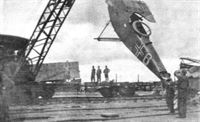 |
J.Herris - Halberstadt Aircraft of WWI. Volume 2: CL.IV-CLS.I & Fighters /Centennial Perspective/ (45) |
| Halb CL.IV '6' loaded on a train on to railway cars at the huge American collection center at Romorantin postwar. Some of these Halberstadts were shipped to the USA. |
 |
J.Herris - Halberstadt Aircraft of WWI. Volume 2: CL.IV-CLS.I & Fighters /Centennial Perspective/ (45) |
| Halberstadt CL.IV derelicts in a group of aircraft gathered for destruction after the Armistice. The first aircraft in view in both photos is C.IV(Rol) 9433/18. (Peter M. Grosz collection/STDB) |
 |
J.Herris - Halberstadt Aircraft of WWI. Volume 2: CL.IV-CLS.I & Fighters /Centennial Perspective/ (45) |
| Halberstadt CL.IV undergoing field maintenance in a tent hangar and the mechanics who are performing it. (Peter M. Grosz collection/STDB) |
 |
J.Herris - Halberstadt Aircraft of WWI. Volume 2: CL.IV-CLS.I & Fighters /Centennial Perspective/ (45) |
| Halberstadt CL.IV prototype in February 1918. The simplified nose entry without spinner was a change from the CL.II. There were two machine guns mounted just for pilot; production CL.IV aircraft were normally fitted with one gun due to weight concerns. The speckled camouflage was a Halberstadt standard. (Peter M. Grosz collection/STDB) |
 |
J.Herris - Halberstadt Aircraft of WWI. Volume 2: CL.IV-CLS.I & Fighters /Centennial Perspective/ (45) |
| ON THE BRITISH WESTERN FRONT IN FRANCE. - Winged by Australians on the Western Front. A German bombing and reconnaissance machine brought down by a machine gunner. It reminds us very much of the Halberstadt 2-seater illustrated in our Issue of August 1st. Australian troops surround a downed Halberstadt CLIV 4675/18 'V' of Schlasta 13. The aircraft was flown by Uffz. Ackenhausen and Flgr. Amzehnhoff. The aircraft was probably downed by ground fire. The rack below the observer's cockpit held six Wurfgranaten 15; these were held by a wire running through their nose caps. The observer could pull the wire to drop a salvo of grenades. Captured on September 23, 1918. This aircraft received the British Serial G/5Bde/22 and was subject of a Ministry of Munitions report. It was sent to Islington for display in the Enemy viewing room. (Peter M. Grosz collection/STDB) |
 |
J.Herris - Halberstadt Aircraft of WWI. Volume 2: CL.IV-CLS.I & Fighters /Centennial Perspective/ (45) |
| A downed Halberstadt CLIV 4675/18 'V' of Schlasta 13. The aircraft was flown by Uffz. Ackenhausen and Flgr. Amzehnhoff. The aircraft was probably downed by ground fire. Captured on September 23, 1918. This aircraft received the British Serial G/5Bde/22 and was subject of a Ministry of Munitions report. It was sent to Islington for display in the Enemy viewing room. (Peter M. Grosz collection/STDB) |
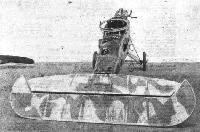 |
Журнал - Flight за 1918 г. |
| Rear view of tail and fuselage of Halberstadt C.L. IV. |
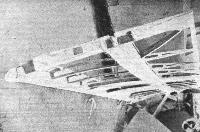 |
Журнал - Flight за 1918 г. |
| Photograph showing internal construction of lower plane of Halberstadt C.L. IV. Notice the pronounced wash-out. |
 |
J.Herris - Halberstadt Aircraft of WWI. Volume 2: CL.IV-CLS.I & Fighters /Centennial Perspective/ (45) |
| Halberstadt CL.IV of FliegerAbteilung 432 postwar. (Peter M. Grosz collection/STDB) |
 |
J.Herris - Halberstadt Aircraft of WWI. Volume 2: CL.IV-CLS.I & Fighters /Centennial Perspective/ (45) |
| Halberstadt CL.IV postwar with an interesting insignia. (Reinhard Zankl) |
 |
J.Herris - Halberstadt Aircraft of WWI. Volume 2: CL.IV-CLS.I & Fighters /Centennial Perspective/ (45) |
| Closeup of the insignia of the postwar Halberstadt CL.IV. (Reinhard Zankl) |
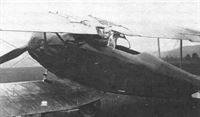 |
J.Herris - Halberstadt Aircraft of WWI. Volume 2: CL.IV-CLS.I & Fighters /Centennial Perspective/ (45) |
| Halberstadt CLIV converted to civilian service postwar. (Michael Schmeelke) |
 |
J.Herris - Halberstadt Aircraft of WWI. Volume 2: CL.IV-CLS.I & Fighters /Centennial Perspective/ (45) |
| This Dutch Halberstadt CL.IV was used on a commercial service - Hengelo-Schiphol-London. Photograph circa August 1920. (Peter M. Grosz collection/STDB) |
 |
J.Herris - Halberstadt Aircraft of WWI. Volume 2: CL.IV-CLS.I & Fighters /Centennial Perspective/ (45) |
| Halberstadt CL.IV in Lithuanian service; the pilot was Jurgis Dobkevicius and the passenger was Aleksandras Stulginskis, the president of Lithuania, Aleksotas/Kaunas, 1922. (Peter M. Grosz collection/STDB) |
 |
J.Herris - Halberstadt Aircraft of WWI. Volume 2: CL.IV-CLS.I & Fighters /Centennial Perspective/ (45) |
| Dobi-I (at right), design of J. Dobkevicius, next to three Halberstadt CL.IV aircraft of the Lithuanian 1st Air Squadron at Aleksotas/Kaunas, 1922. (Peter M. Grosz collection/STDB) |
 |
J.Herris - Halberstadt Aircraft of WWI. Volume 2: CL.IV-CLS.I & Fighters /Centennial Perspective/ (45) |
| Estonian Halberstadt CL.IV with (LtoR) A. Kaat (mechanic); P. Paev (pilot) & G. Michelson (observer). (Peter M. Grosz collection/STDB) |
 |
J.Herris - Halberstadt Aircraft of WWI. Volume 2: CL.IV-CLS.I & Fighters /Centennial Perspective/ (45) |
| Halberstadt CL.IV in postwar Lithuanian service with Belgian or French style marking. (Moshe Bukhman) |
 |
J.Herris - Halberstadt Aircraft of WWI. Volume 2: CL.IV-CLS.I & Fighters /Centennial Perspective/ (45) |
| Halberstadt modified for Swiss civil service postwar and registered as Halberstadt C II CH-68. Although these photos appear to show a C.V aircraft at first glance, it is actually a Halberstadt CL.IV modified with 2-bay wings. Note that the interplane struts are not parallel, but the C.V had parallel interplane struts. (Peter M. Grosz collection/STDB) |
 |
J.Herris - Halberstadt Aircraft of WWI. Volume 2: CL.IV-CLS.I & Fighters /Centennial Perspective/ (45) |
| Halberstadt CL.IV possibly work number 1770 in postwar Soviet Russian service. (Peter M. Grosz collection/STDB) |
 |
J.Herris - Halberstadt Aircraft of WWI. Volume 2: CL.IV-CLS.I & Fighters /Centennial Perspective/ (45) |
| Halberstadt CL.IV refurbished and in Soviet service in 1921. |
 |
J.Herris - Halberstadt Aircraft of WWI. Volume 2: CL.IV-CLS.I & Fighters /Centennial Perspective/ (45) |
| Halberstadt CL.IV postwar with the gun ring removed; the German civil 'D' registration is being applied but the number has not been. The star was used to indicate that the machine was allowed by the inter Allied Control Commission for civil purposes. (Peter M. Grosz collection/STDB) |
 |
J.Herris - Halberstadt Aircraft of WWI. Volume 2: CL.IV-CLS.I & Fighters /Centennial Perspective/ (45) |
| Paul Strahle's Halberstadt CL.IV D111 taking off. The work number was 1410. A six-pointed star was applied to the bottom of the lower wing lower wing indicating it was approved for civil use by the IAACC. (Peter M. Grosz collection/STDB) |
 |
J.Herris - Halberstadt Aircraft of WWI. Volume 2: CL.IV-CLS.I & Fighters /Centennial Perspective/ (45) |
| Halberstadt CL.IV D144 at a postwar air show. D144 was an aircraft of the Strahle Luftverkehr. (Peter M. Grosz collection/ STDB) |
 |
J.Herris - Halberstadt Aircraft of WWI. Volume 2: CL.IV-CLS.I & Fighters /Centennial Perspective/ (45) |
| Halberstadt CL.IV of the postwar Luftverkehr Strahle. This was the initial flight of Strahle's D-71 on 3 January 1921, with the Stuttgart Oberburgermeister (Mayor) Lautenschlager as passenger. (Peter M. Grosz collection/STDB) |
 |
J.Herris - Halberstadt Aircraft of WWI. Volume 2: CL.IV-CLS.I & Fighters /Centennial Perspective/ (45) |
| This civil CL.IV, D.71, was used by Luftverkehr Paul Strahle of Schorndorf from January 1921. Preserved in the Daimler-Benz Museum, Stuggart, In 2005 it was moved to a new museum in Schorndorf. This is the oldest existing German civil airliner. (Peter M. Grosz collection/STDB) |
 |
J.Herris - Halberstadt Aircraft of WWI. Volume 2: CL.IV-CLS.I & Fighters /Centennial Perspective/ (45) |
| Halberstadt CL.IV D71 after its restoration by MVT into its original colors. This is the oldest German civil airliner in existence. |
 |
J.Herris - Halberstadt Aircraft of WWI. Volume 2: CL.IV-CLS.I & Fighters /Centennial Perspective/ (45) |
| Halberstadt CL.IV D71 after its restoration by MVT into its original colors. This is the oldest German civil airliner in existence. |
 |
J.Herris - Halberstadt Aircraft of WWI. Volume 2: CL.IV-CLS.I & Fighters /Centennial Perspective/ (45) |
| Halberstadt CL.IV of the Strahle Luftverkehr on display after restoration as D71. |
 |
J.Herris - Halberstadt Aircraft of WWI. Volume 2: CL.IV-CLS.I & Fighters /Centennial Perspective/ (45) |
| Halberstadt CL.IV of the Strahle Luftverkehr on display after restoration as D71. |
 |
J.Herris - Halberstadt Aircraft of WWI. Volume 2: CL.IV-CLS.I & Fighters /Centennial Perspective/ (45) |
| Halberstadt CL.IV of the Strahle Luftverkehr during restoration. |
 |
J.Herris - Halberstadt Aircraft of WWI. Volume 2: CL.IV-CLS.I & Fighters /Centennial Perspective/ (45) |
| Halberstadt CL.IV of the Strahle Luftverkehr during restoration. |
 |
J.Herris - Halberstadt Aircraft of WWI. Volume 2: CL.IV-CLS.I & Fighters /Centennial Perspective/ (45) |
| Halberstadt CL.IV of the Strahle Luftverkehr during restoration. |
 |
J.Herris - Halberstadt Aircraft of WWI. Volume 2: CL.IV-CLS.I & Fighters /Centennial Perspective/ (45) |
| Halberstadt CL.IV of the Strahle Luftverkehr during restoration. |
 |
J.Herris - Halberstadt Aircraft of WWI. Volume 2: CL.IV-CLS.I & Fighters /Centennial Perspective/ (45) |
| The unrestored, remnant fuselage of CL.IV (Rol) 8103/18 which was restored from the Strahle collection and that is now beautifully displayed at the NASM at Udvar-Hazy. |
 |
J.Herris - Halberstadt Aircraft of WWI. Volume 2: CL.IV-CLS.I & Fighters /Centennial Perspective/ (45) |
| Wing with original camouflage fabric of Halberstadt CL.IV D144 (probably from a Halberstadt CL.II used as a spare part) before it was restored. |
 |
J.Herris - Halberstadt Aircraft of WWI. Volume 2: CL.IV-CLS.I & Fighters /Centennial Perspective/ (45) |
| Wing with original camouflage fabric of Halberstadt CL.IV D144 (probably from a Halberstadt CL.II used as a spare part) before it was restored. |
 |
J.Herris - Halberstadt Aircraft of WWI. Volume 2: CL.IV-CLS.I & Fighters /Centennial Perspective/ (45) |
| Halberstadt CL.IV '5' after a bad landing. Some discussion is comically taking place. |
 |
J.Herris - Halberstadt Aircraft of WWI. Volume 2: CL.IV-CLS.I & Fighters /Centennial Perspective/ (45) |
| Halberstadt CL.IV of FliegerAbteilung 426 crashed by Vzfw. Bachert at Suwalki on 13 April, 1919. The photo shows details of its upper wing center section with radiator offset to the right of centerline and fuel tank at left. (Peter M. Grosz collection/STDB) |
 |
J.Herris - Halberstadt Aircraft of WWI. Volume 2: CL.IV-CLS.I & Fighters /Centennial Perspective/ (45) |
| Crashed Halberstadt CL.IV shows its factory finish on the fuselage and tailplane. The notation on the photograph indicates it was taken 30 October, 1918. (Peter M. Grosz collection/STDB) |
 |
J.Herris - Halberstadt Aircraft of WWI. Volume 2: CL.IV-CLS.I & Fighters /Centennial Perspective/ (45) |
| Crashed Halberstadt CL.IV 4633/18 from the first production batch. |
 |
J.Herris - Halberstadt Aircraft of WWI. Volume 2: CL.IV-CLS.I & Fighters /Centennial Perspective/ (45) |
| Derelict Halb CL.IV from Schlasta 9 postwar. |
 |
J.Herris - Halberstadt Aircraft of WWI. Volume 2: CL.IV-CLS.I & Fighters /Centennial Perspective/ (45) |
| Derelict Halb CL.IV from Schlasta 9 postwar. |
 |
J.Herris - Halberstadt Aircraft of WWI. Volume 2: CL.IV-CLS.I & Fighters /Centennial Perspective/ (45) |
| Halberstadt CL.IV '61' crashed 29 May 1925 by Ferdinand Alev in Estonian service. (Reinhard Zankl) |
 |
J.Herris - Halberstadt Aircraft of WWI. Volume 2: CL.IV-CLS.I & Fighters /Centennial Perspective/ (45) |
| Halberstadt CLIV(Rol) '61' (work no. 4328) crashed in Spring 1925 in Estonian service when it ran into a wall around the airfield at Lasnamagi. (Peter M. Grosz collection/STDB) |
 |
J.Herris - Halberstadt Aircraft of WWI. Volume 2: CL.IV-CLS.I & Fighters /Centennial Perspective/ (45) |
| Halberstadt CL.IV(Rol) '59' (work no. 4315) in Estonian service. Purchased from Dansk Luft Express, Sablatnig's subsidiary, at Vamdrup, Denmark, on 5 December 1921. Crashed by pilot Lt. Alev an 29 May 1925. Mechanic Tonishof sustained severe injuries and died in hospital. Written off 2 July 1925. (Peter M. Grosz collection/STDB) |
 |
J.Herris - Halberstadt Aircraft of WWI. Volume 2: CL.IV-CLS.I & Fighters /Centennial Perspective/ (45) |
| Halberstadt wartime advertisement. (Michael Schmeelke) |
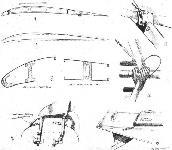 |
Журнал - Flight за 1918 г. |
| Some constructional details of the Halberstadt C.L. IV. - 1. Top plane wing section. 2. Comparison between the section shown in 1 and the R.A.F. 14. 3. The three-ply surrounds to the spars, drawn to scale. 4. Fuselage fitting for bottom plane. 5. Shock absorber and undercarriage cross-tubes. 6. Tail plane attacnmeni. 7. Adjustable mounting of seat. |
 |
J.Herris - Halberstadt Aircraft of WWI. Volume 2: CL.IV-CLS.I & Fighters /Centennial Perspective/ (45) |
| Halberstadt CL.IV 1st Production Batch Factory Colors |
 |
J.Herris - Halberstadt Aircraft of WWI. Volume 2: CL.IV-CLS.I & Fighters /Centennial Perspective/ (45) |
| Halberstadt CL.IV Roland Production Batch Factory Colors |
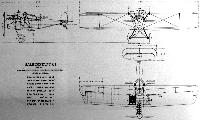 |
Jane's All The World Aircraft 1919 /Jane's/ |
| Halberstadt C.4 |
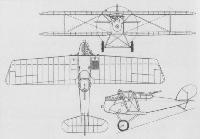 |
W.Green, G.Swanborough - The Complete Book of Fighters |
 |
O.Thetford, P.Gray - German Aircraft of the First World War /Putnam/ |
 |
Журнал - Flight за 1918 г. |
| General arrangement drawings of the Halberstadt C.L. IV. |
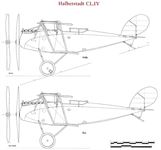 |
J.Herris - Halberstadt Aircraft of WWI. Volume 2: CL.IV-CLS.I & Fighters /Centennial Perspective/ (45) |
| Halberstadt CL.IV |
 |
J.Herris - Halberstadt Aircraft of WWI. Volume 2: CL.IV-CLS.I & Fighters /Centennial Perspective/ (45) |
| Halberstadt CL.IV |
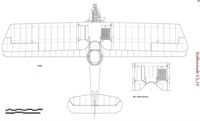 |
J.Herris - Halberstadt Aircraft of WWI. Volume 2: CL.IV-CLS.I & Fighters /Centennial Perspective/ (45) |
| Halberstadt CL.IV |
 |
J.Herris - Halberstadt Aircraft of WWI. Volume 2: CL.IV-CLS.I & Fighters /Centennial Perspective/ (45) |
| Halberstadt CL.IV |